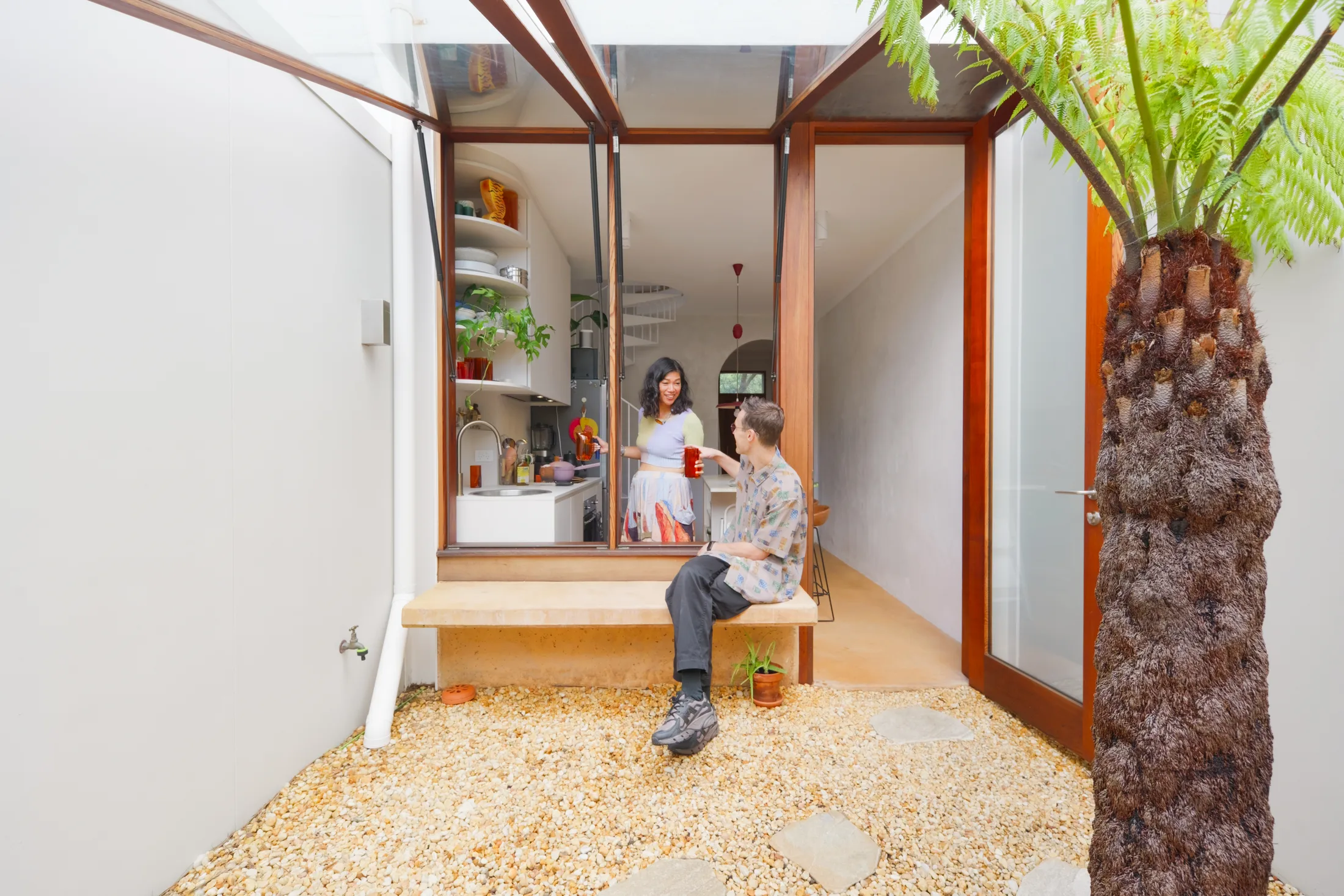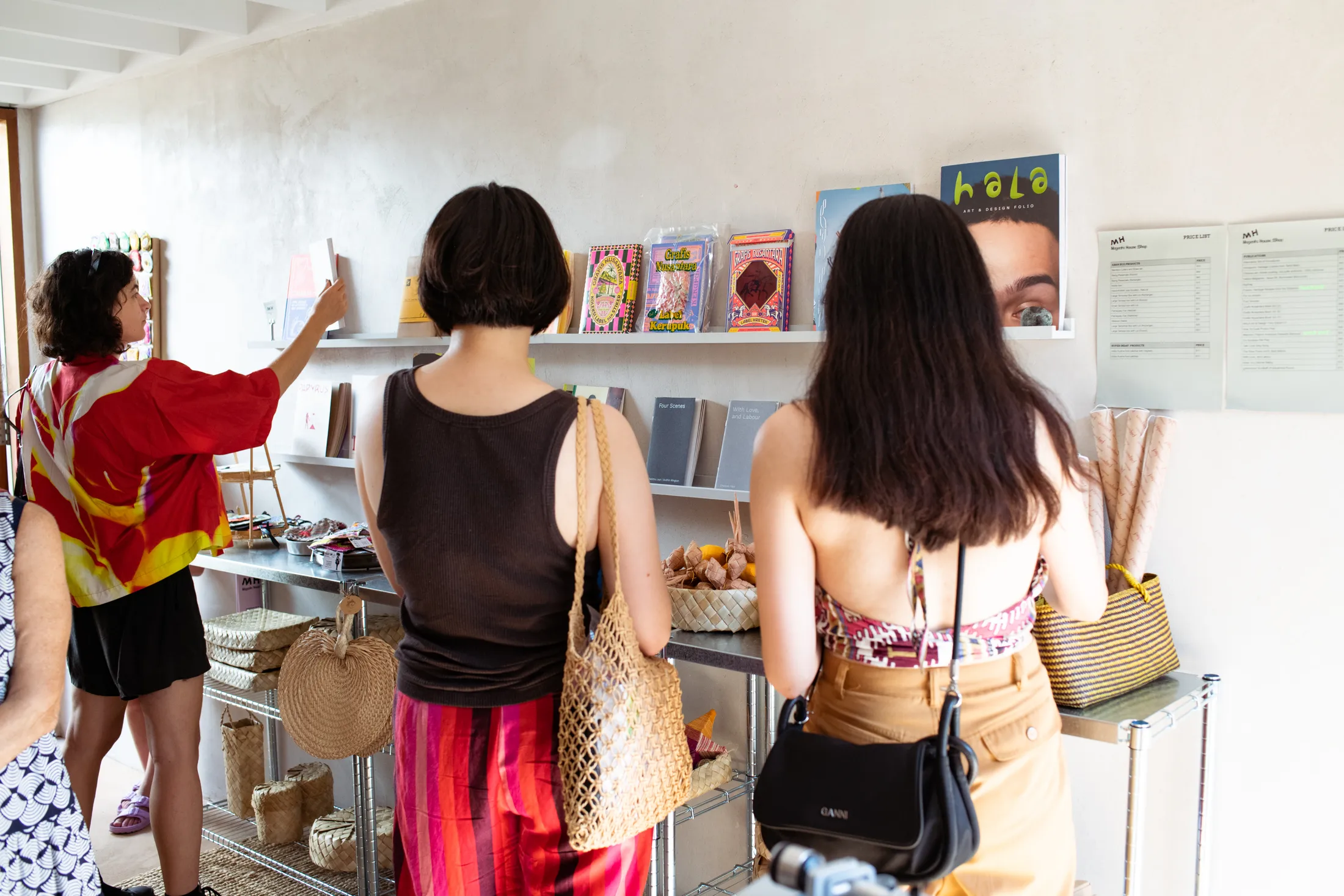Open Menu
Search

Magenta House redefines the meaning of home, creating a space where hospitality, creativity, and community come together. What began as a simple idea to connect with neighbours has evolved into a vibrant hub for collaboration and cultural exchange.



“How we gather is manifested through communal meals, coworking sessions and social activities. And we exchange knowledge via dialogues, recipe-sharing, educational dialogues, and e-commerce projects.”




“Ultimately, this project explores creative communions and circular learning through the lens of hosts and guests”.




“Even though we are in the heart of the inner city it feels like we are in a mirage. It’s very quiet here.”





“If you come here, whether to share a meal or listen to an artist talk, you can leave with a piece of that experience to take home.”




“The furniture Tetris was a real thing, trying to find a couch or chairs that fit into this 3 meter wide walking space. Everything now is small and packable, rather than having one big chunky object that dominates the space”.




There’s hosting, and then there’s Magenta House. This inspiring endeavour was made possible by two people who opened their home to friends, neighbours, and strangers alike. “I grew up in the Philippines, where we had a family bakery beneath my bedroom,” shares Mariam Ella Arcilla. “We always had people coming in and eating, so I feel like creative hospitality is in my bloodline.”
From the outside, it certainly seems that way. Arcilla, a writer and arts worker, and her partner, Mason Kimber, an artist and DJ, bought the re-envisioned 19th-century Victorian terrace from architect Adele McNab in 2022. They hadn’t initially planned to create what they’ve dubbed a “gathering and knowledge-sharing space” in their home, but things changed after moving in. They came to enjoy the way neighbours stopped by to greet them, often staying for a chat inside. Before long, they thought: Why not open this up to the public? And so, Magenta House was born.
The evolution from a private home to community space happened organically. But at its heart, it all started with a street party: “a really fun way to get to know the neighbourhood and build social cohesion,” according to Arcilla. Teaming up with neighbours, Arcilla and Kimber organised a free, all-day celebration with a DJ and food stalls in 2023. The event, which they named the Bin Alley Biennale, took place in the alleyway behind Magenta House, and it was such a success that it is now (as the name implies) a twice-yearly tradition.
This sense of connection to the community reinforced their vision: “We began to think about how ideas interweave during intimate gatherings and the role a home can play in bringing these encounters together,” Arcilla explains. They began trialling talks, supper clubs, co-working days, and reading sessions with friends. These “test labs,” as she put it, helped shape the development of Magenta House as it is today, a project dedicated to “exploring creative communions and circular learning by exploring the dynamic between hosts and guests.”
Creating Magenta House required both vision and flexibility. While the first floor, where the bedroom and bathroom are, is kept private, the rest of the home is rich with opportunities to connect. “We’ve tried so many configurations in the house. We had to figure out ways to make everything modular,” Kimber notes, adding, “The biggest adjustment was thinking about rooms as multimodal rather than single-use.” Perhaps the best example of this is the stand-alone studio beyond the courtyard. Accessed via double doors, which make it easier to move things around, the studio features a DJ booth, a convertible couch for guests including artist residencies, and the couple’s latest initiative: Magenta House Shop. The shop’s inventory features publications and artisanal products that explore food cultures, heritage ventures, and experimental publishing across Asia and Australia.
The library serves as another compelling example of adaptive space. Arcilla and Kimber transformed their entrance room with custom shelving that houses a variety of books on design, art, and food cultures. A mix of various low-to-the-ground seating options help to give the space a comfortable, informal feel. “When I was a kid, I ran a pop-up library, and this library is really an adult extension of that,” says Arcilla. The library is open most weekends. Arcilla adds, “It offers guests a gentle introduction to the space where they can discover something new.” Even the kitchen also plays multiple roles. A large spider marble benchtop anchors the room, serving as a breakfast bar, dining table, and a “stage of sorts” for special events where a chef or teacher presents from one side to students gathered on the other.
Just as a childhood library gave way to the Magenta House library, this space reflects a thoughtful evolution. As Kimber puts it, “Walking into this house, seeing how architect Adele McNab configured the space, it felt like a place meant to be shared.” Yet, this endeavour wasn’t simply fated; it was carefully shaped by two visionaries who saw the potential for a space that extends beyond private living – one that celebrates literature, art, cuisine, and community. More than a place to gather, it demonstrates the power of a home to shape something greater than itself.